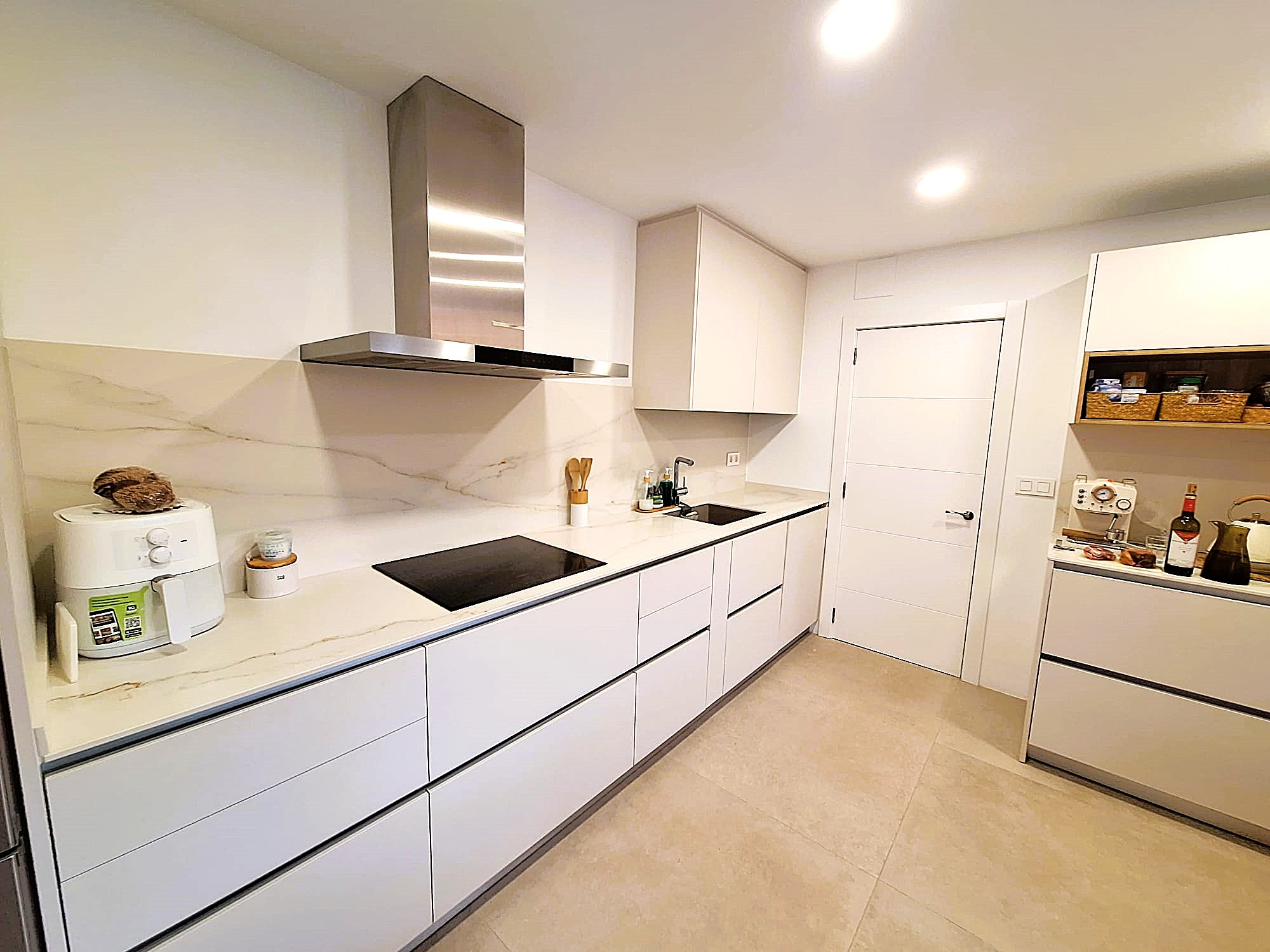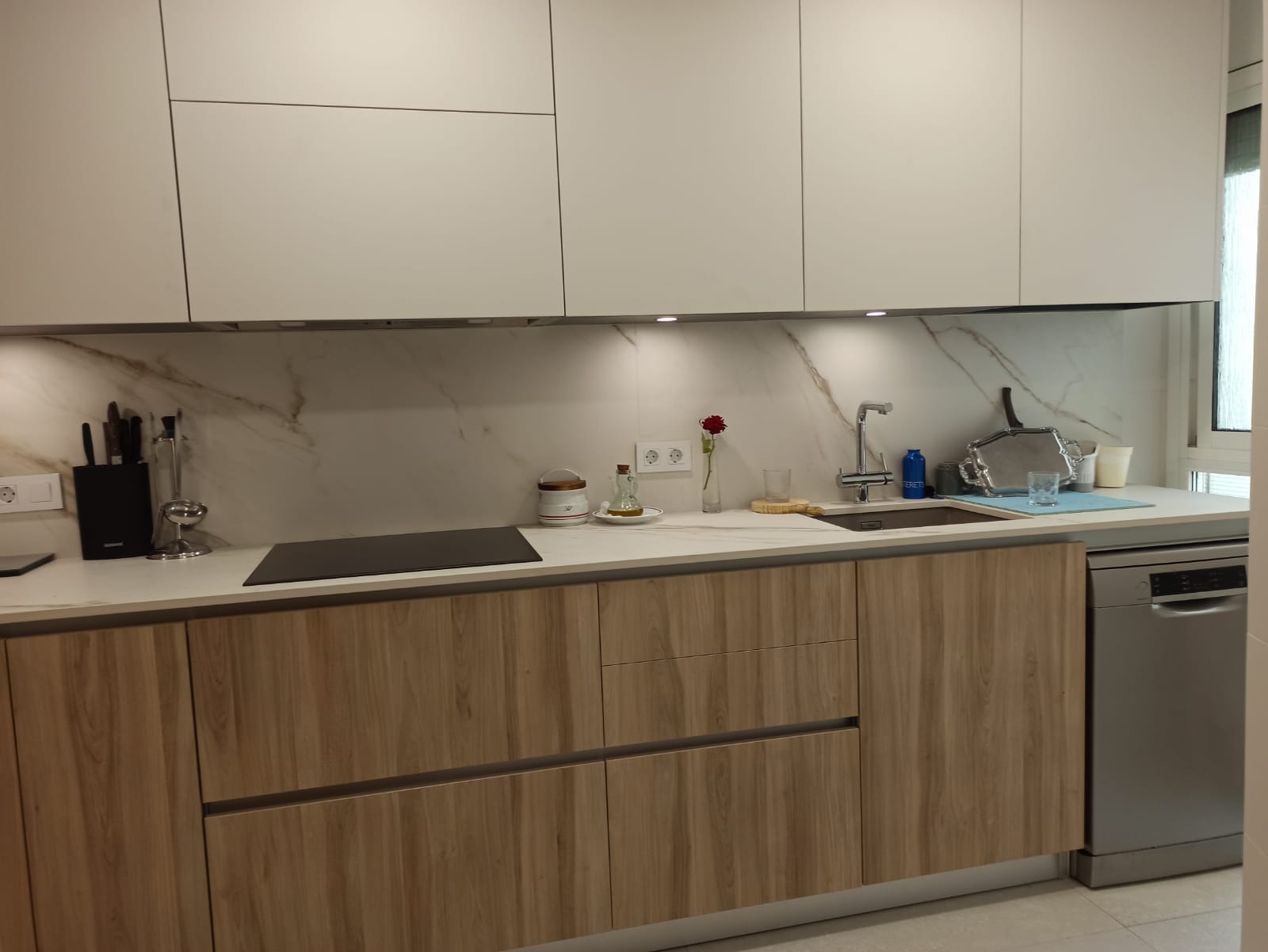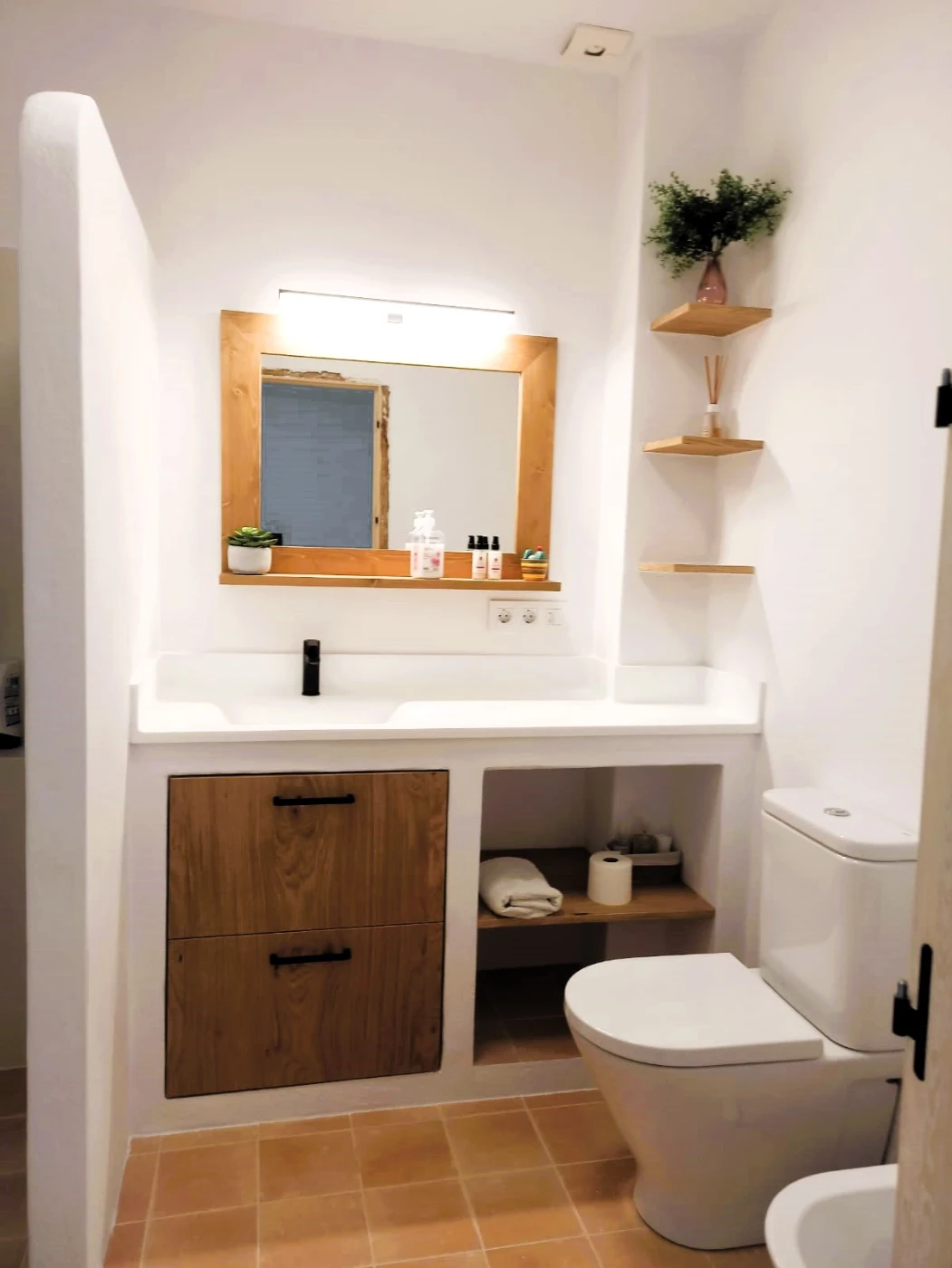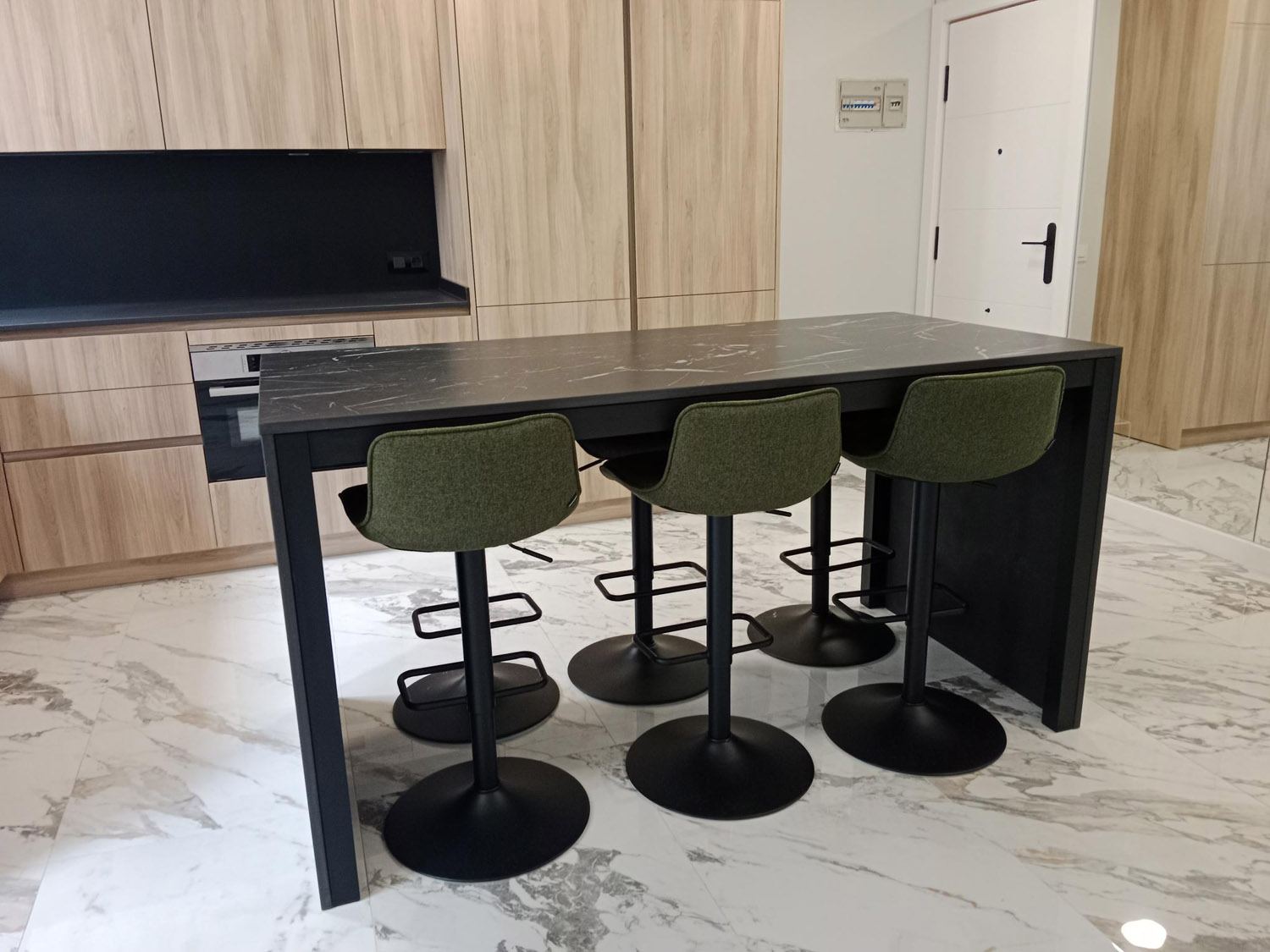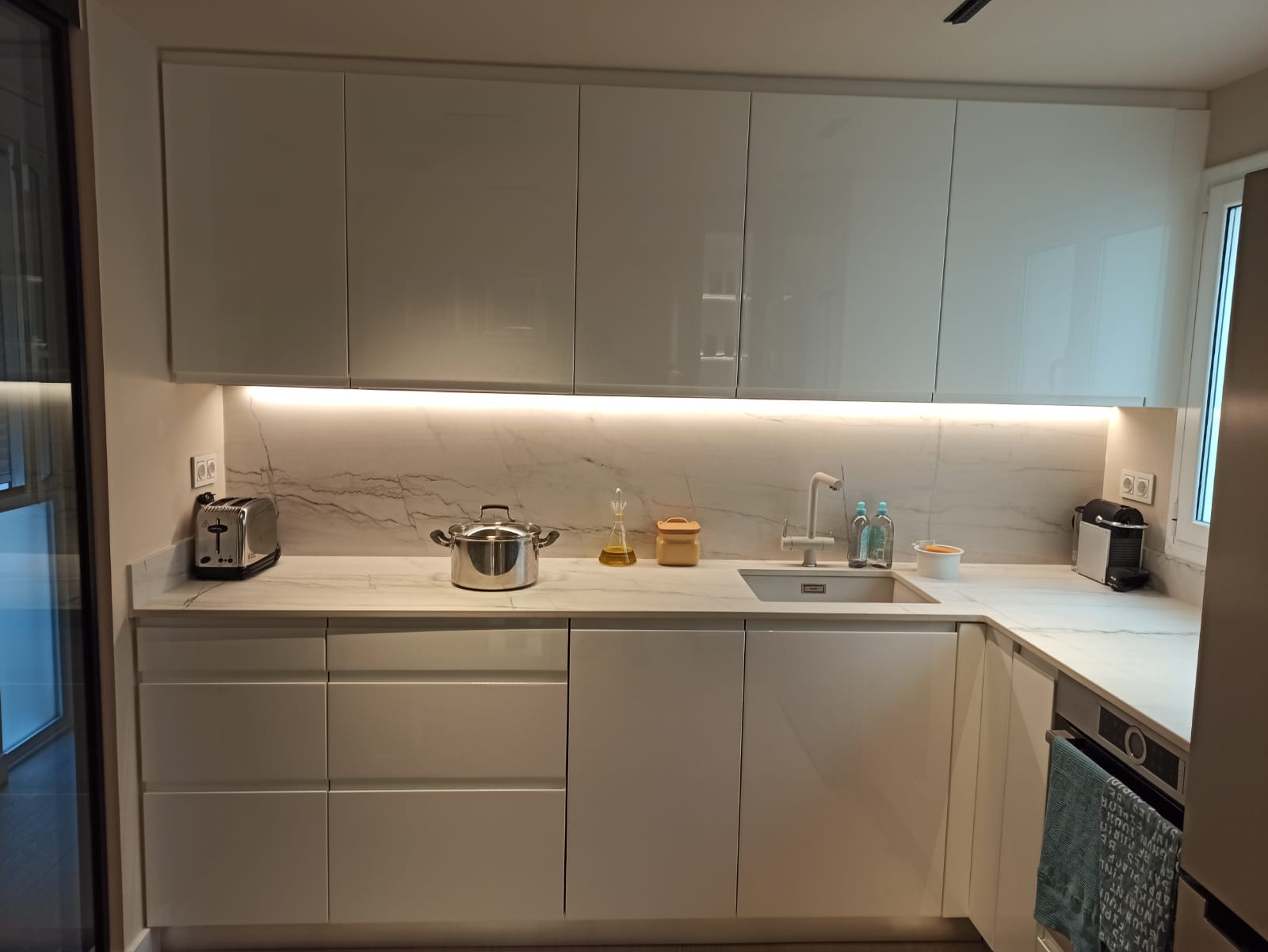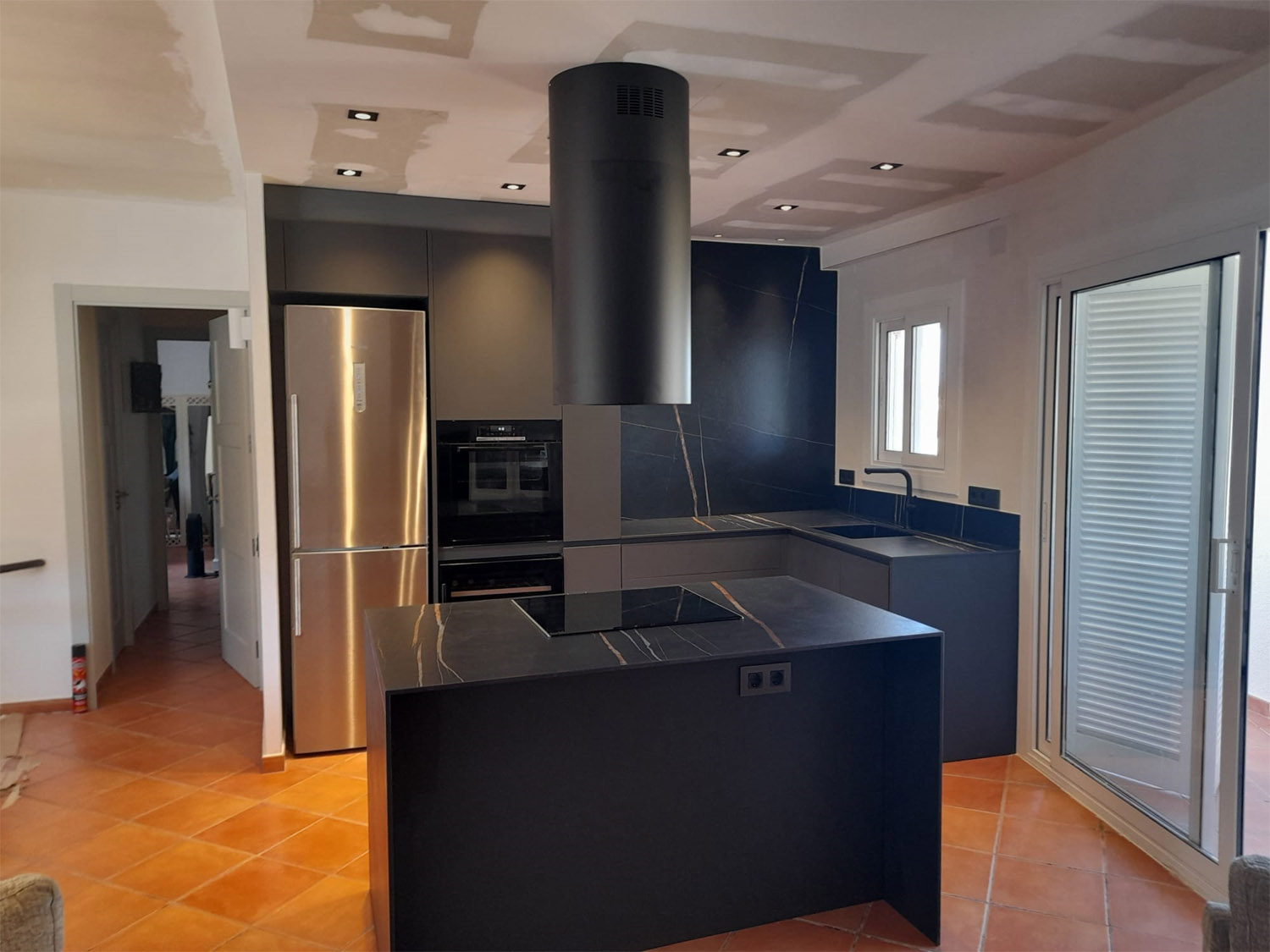Those who say “good things come in small jars” probably don’t have to deal with the challenges of small kitchens like crowded cabinets and limited counter space. If your kitchen seems more cramped than practical, it may be time for a change. Cer…
1 Create space with light colors
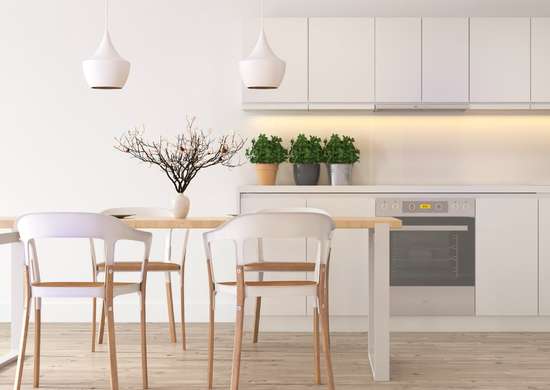
The three main design components that determine the feeling of spaciousness in a room are color, lighting and room content.
The easiest quick fix, especially if you’re not willing to reduce your kitchenware collection or install more lighting, is to repaint. Dark, bold walls can make a kitchen look cluttered (or cozy), while, conversely, lighter tones offer a feeling of spaciousness. Create a sense of openness with antique whites, off-whites, creams, light yellows or pale gray tones.
2, Avoid strong visual contrasts
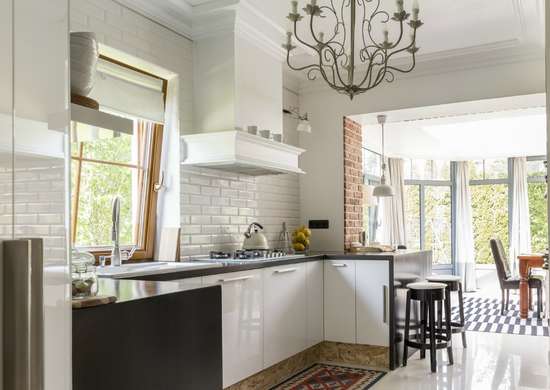
. :
Once you choose a light color, commit to it. To liven things up, some homeowners incorporate a strong, bold wall color into a light-toned kitchen. “In a large kitchen, that can work, but in a small kitchen, the strong visual contrast creates a sense of segmentation. A better way to add some optical punch to an otherwise drab kitchen is to play with extras:
Keep all walls light and bright, then introduce color into your kitchen in small, non-permanent ways: through colorful window treatments, kitchen towels or accessories like casserole sets.
3, Add lighting
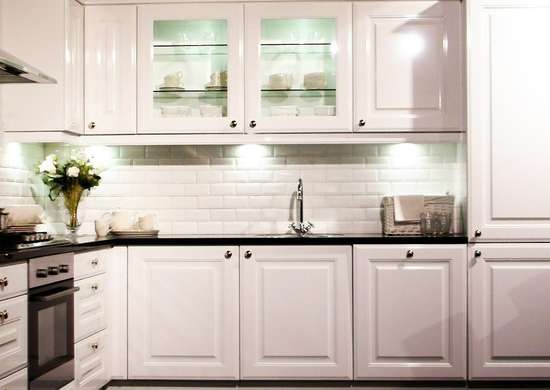
“The human eye is naturally drawn to the point of greatest contrast in a room, and in a kitchen, that’s usually the top of the cabinets. When shadows create a strong visual line between the cabinets and the ceiling, the kitchen can appear as narrow as it would with a high-contrast accent wall. You can erase or soften those shadows by installing overhead lighting over the cabinets. The lighting that is installed above the cabinets is soft lighting that relieves the visual contrast created by shadows and, as a result, makes the entire room appear more open. Lighting installed under the overhead cabinets and directed to the countertop works in a similar way:
The light will fill in the shadows under the cabinet and reduce the contrast, giving the impression of a larger kitchen.
4. Increase spaciousness with cabinets.
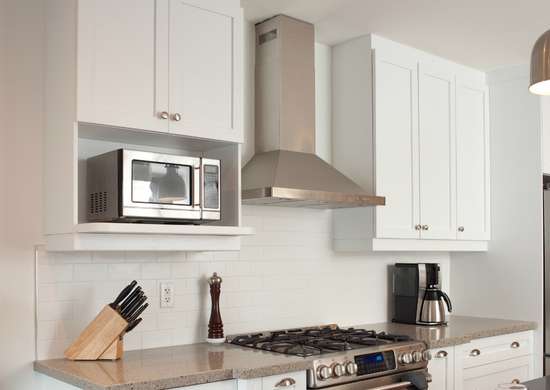
Thinking of buying new cabinets? Opt for taller-than-normal upper cabinets, which “raise eye level and make the ceiling appear higher,” says Maykut. If you need more incentive, don’t forget that taller cabinets mean more storage space, something that is often very important in compact kitchens.
To make the decision as easy as possible, Sears Home Services allows homeowners to compare a host of cabinet door styles and veneer samples right in the space. Key points to keep in mind: Keep the color of the cabinets light (like the walls) and avoid intricate door designs, which can be too cluttered for a small kitchen. Door styles with flat fronts best complement the clean lines of a kitchen. Also simplify cabinet hardware: Opt for concealed hinges, low-profile bar pulls or recessed grooves in cabinet doors instead of large, ornate knobs and pulls.
5. Find a place for everything
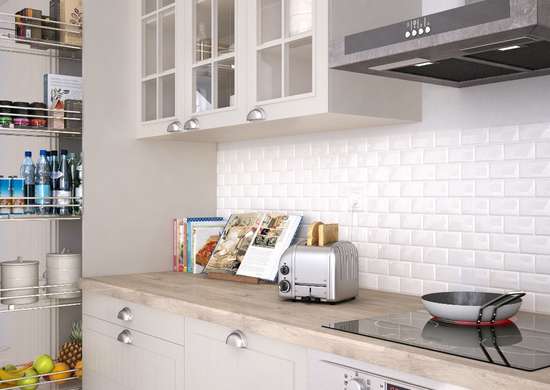
When left on the countertop, cookbooks, spices and small appliances take up valuable work space and draw attention to the insufficient size of a kitchen. If you’re considering new closets, consider the many customizable solutions offered by Sears Home Services. In addition to taller upper cabinets, options such as concealed storage shelves and pull-out or pull-down shelves maximize storage space behind neatly closed doors. Remember: The less cluttered the kitchen, the bigger it will feel.
6. Opt for glass cabinet doors
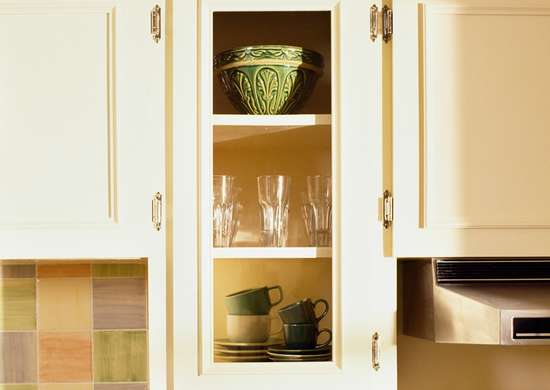
eReplacing solid cabinet doors with glass-front doors can add visual depth, fooling the eye into thinking the kitchen is more spacious than it really is. The eye is drawn to the inside of the cabinet instead of stopping at the door, creating the illusion of space. If you are considering glass panels, opt for white or clear woodwork to maximize their effect. “Glass doors offer a sense of space when installed in light-colored cabinets, but they are not very effective in dark cabinets,” Lincon says.
Glass-front doors don’t have to show off the jumble of cups or all the mismatched plates you have. Sears Home Services customers who don’t want the contents of their cabinets to be visible have the option of choosing opaque glass, which helps conceal what’s inside. However, even the opaque glass reflects light, which brightens the overall kitchen.
7. Choose reflective materials
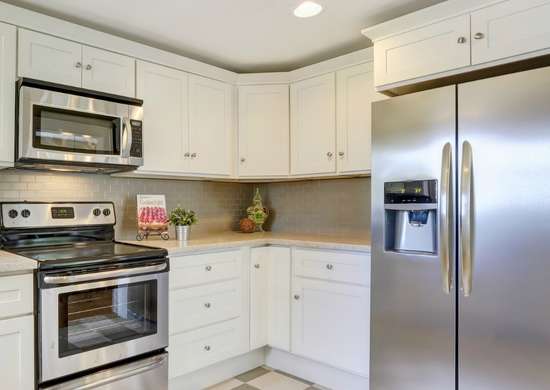
Glossy surfaces can bounce light and ultimately make any kitchen appear larger. “It has a lot to do with how the glossy surfaces pick up and reflect the tones of the walls and cabinets,” Lincon says. For example, if you have antique white cabinets, the sheen of the stainless steel appliances will reflect some of this off-white tone and amplify the space-enhancing effects of your choice of cabinet color.
“Another good way to add reflections to the kitchen is to install a glass back panel,” Lincon says. Together with under-cabinet lighting and a new reflective countertop such as polished quartz, “it creates a wonderful open transition between the countertop and the upper cabinets,” he explains.
8. Opens up floor space
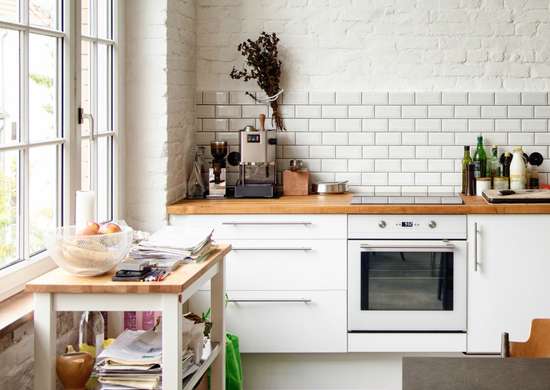
A small kitchen table – or at least one with leaves that can be folded down between meals – will give you more room to maneuver in the kitchen. The same goes for other space-consuming elements, such as a free-standing kitchen island or a display cabinet. By choosing smaller models, you will increase the space for foot traffic and meal preparation. These items are much easier to reduce than, say, kitchen appliances, Maykut says. Major appliances (stoves, refrigerators and dishwashers) come in standard sizes, and smaller, apartment-sized models do not always fit well in cabinet configurations and may not be suitable for the needs of a large family.
9. Let in natural light
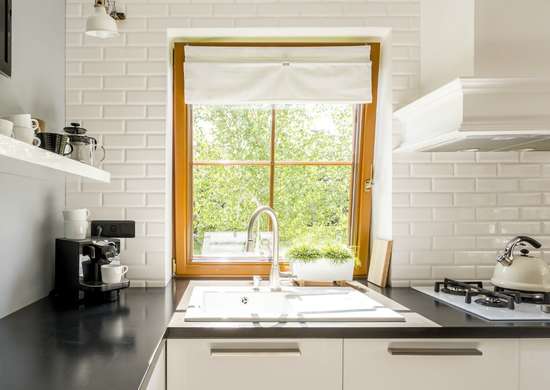
The view from the kitchen window should make the outdoors – whether it’s a deck where gatherings are held or a large, leafy backyard – seem like an extension of the kitchen. Replace the heavy curtains and blinds with sheer curtains or just a valance, and leave the rest of the window uncovered. The additional natural light will not only visually expand the space, but will also help infuse that coveted lightness.

